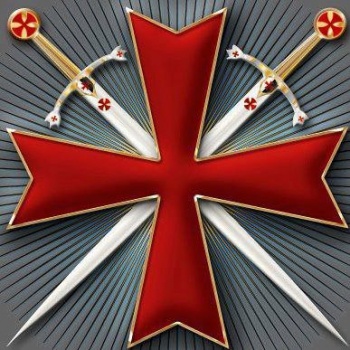En: The Maltese cross: Unterschied zwischen den Versionen
K (Sprachverweis beigefügt) |
|||
| (Eine dazwischenliegende Version von einem anderen Benutzer wird nicht angezeigt) | |||
| Zeile 3: | Zeile 3: | ||
Source: [[Phoenixmasonry]] | Source: [[Phoenixmasonry]] | ||
[[Datei:Malteserkreuz.jpg |thumb|350px|Artwork pictured is by Bro. [[Stephen McKim]]]] | [[Datei:Malteserkreuz.jpg |thumb|350px|Artwork pictured is by Bro. [[Stephen McKim]]]] | ||
| − | |||
The Maltese cross, also known as the Amalfi cross is the cross symbol associated with the Knights Hospitaller (the Knights of Malta) and by extension with the island of Malta. The cross is eight-pointed and has the form of four "V"-shaped elements joined together at their tips, so that each arm has two points. Its design is based on crosses used since the First Crusade. It is also the modern symbol of Amalfi, a small Italian republic of the 11th century. | The Maltese cross, also known as the Amalfi cross is the cross symbol associated with the Knights Hospitaller (the Knights of Malta) and by extension with the island of Malta. The cross is eight-pointed and has the form of four "V"-shaped elements joined together at their tips, so that each arm has two points. Its design is based on crosses used since the First Crusade. It is also the modern symbol of Amalfi, a small Italian republic of the 11th century. | ||
| Zeile 9: | Zeile 8: | ||
In the mid 16th century, when the Knights were at Malta, the familiar design now known as the "Maltese Cross" became associated with the island. The first evidence for Maltese Cross on Malta appears on the 2 Tarì and 4 Tarì Copper coins of the Grand Master Jean Parisot de la Vallette (Grand Master 1557–1568). The 2 and 4 Tarì Copper coins are dated 1567. This provides a date for the introduction of the Maltese Cross. The Maltese cross was depicted on the two mils coin in the old Maltese currency and is now shown on the back of the one and two Euro coins, introduced in January 2008. | In the mid 16th century, when the Knights were at Malta, the familiar design now known as the "Maltese Cross" became associated with the island. The first evidence for Maltese Cross on Malta appears on the 2 Tarì and 4 Tarì Copper coins of the Grand Master Jean Parisot de la Vallette (Grand Master 1557–1568). The 2 and 4 Tarì Copper coins are dated 1567. This provides a date for the introduction of the Maltese Cross. The Maltese cross was depicted on the two mils coin in the old Maltese currency and is now shown on the back of the one and two Euro coins, introduced in January 2008. | ||
| − | + | {{Languages|Das Malteserkreuz|Deutsch}} | |
| − | [[Kategorie: English]] | + | |
| + | [[Kategorie: English|Maltese]] | ||
Aktuelle Version vom 27. April 2016, 10:45 Uhr
The Maltese cross
Source: Phoenixmasonry

The Maltese cross, also known as the Amalfi cross is the cross symbol associated with the Knights Hospitaller (the Knights of Malta) and by extension with the island of Malta. The cross is eight-pointed and has the form of four "V"-shaped elements joined together at their tips, so that each arm has two points. Its design is based on crosses used since the First Crusade. It is also the modern symbol of Amalfi, a small Italian republic of the 11th century.
In the mid 16th century, when the Knights were at Malta, the familiar design now known as the "Maltese Cross" became associated with the island. The first evidence for Maltese Cross on Malta appears on the 2 Tarì and 4 Tarì Copper coins of the Grand Master Jean Parisot de la Vallette (Grand Master 1557–1568). The 2 and 4 Tarì Copper coins are dated 1567. This provides a date for the introduction of the Maltese Cross. The Maltese cross was depicted on the two mils coin in the old Maltese currency and is now shown on the back of the one and two Euro coins, introduced in January 2008.
